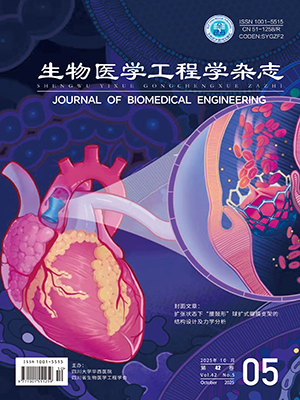| 1. |
于骁, 周再发, 李伟华, 等. 等离子体刻蚀工艺模型研究进展. 微电子学, 2015, 45(1): 94-99.
|
| 2. |
苏葆辉, 冉均国, 苟立, 等. 等离子体活化羟基磷灰石(HA)的机理研究. 生物医学工程学杂志, 2005, 22(4): 711-714.
|
| 3. |
胡国庆. 我国过氧化氢低温等离子体灭菌技术应用现状与管理. 中国消毒学杂志, 2011, 28(3): 353-355.
|
| 4. |
郑超, 徐羽贞, 黄逸凡, 等. 低温等离子体灭菌及生物医药技术研究进展. 化工进展, 2013, 32(9): 2185-2193.
|
| 5. |
Fridman G, Friedman G, Gutsol A, et al. Applied plasma medicine. Plasma Processes and Polymers, 2008, 5(6): 503-533.
|
| 6. |
Julak J, Schlotz V. Decontamination of human skin by low-temperature plasma produced by cometary discharge. Clinical Plasma Medicine, 2013, 1: 31-34.
|
| 7. |
Isbary G, Stolz W, Shimizu T, et al. Cold atmospheric argon plasma treatment may accelerate wound healing in chronic wounds: Results of an open retrospective randomized controlled study in vivo. Clinical Plasma Medicine, 2013, 1: 25-30.
|
| 8. |
Chen C Y, Fan H W, Kuo S P, et al. Blood clotting by low-temperature air plasma. IEEE Transactions on Plasma Science, 2009, 37(6): 993-999.
|
| 9. |
Mirpour S, Ghomi H, Piroozmand S A, et al. The selective characterization of nonthermal atmospheric pressure plasma jet on treatment of human breast cancer and normal cells. IEEE Transactions on Plasma Science, 2014, 42(2): 315-322.
|
| 10. |
Vasilets V N, Shekhter A B, Guller A E, et al. Air plasma-generated nitric oxide in treatment of skin scars and articular musculoskeletal disorders: Preliminary review of observations. Clinical Plasma Medicine, 2015, 3: 32-39.
|
| 11. |
卢新培. 等离子体射流及其医学应用. 高电压技术, 2011, 37(6): 1416-1425.
|
| 12. |
Alster T S, Konda S. Plasma skin resurfacing for regeneration of neck, chest, and hands: investigation of a novel device. Dermato-logic Surgery, 2007, 33(11): 1315-1321.
|
| 13. |
中华人民共和国国家质量监督检验检疫总局. GB 15982-2012医院消毒卫生标准. 北京: 中国标准出版社, 2012.
|
| 14. |
中华人民共和国卫生部. WS/T 313-2009医务人员手卫生规范. 北京: 中国标准出版社, 2009.
|
| 15. |
中华人民共和国卫生部. GB 27950-2011手消毒剂卫生要求. 北京: 中国标准出版社, 2012.
|
| 16. |
Lademann O, Richter H, Patzelt A, et al. Application of a plasma-jet for skin antisepsis: analysis of the thermal action of the plasma by laser scanning microscopy. Laser Physics Letters, 2010, 7(6): 458-462.
|
| 17. |
Morfill G E, Shimizu T, Steffes B, et al. Nosocomial infections--a new approach towards preventive medicine using plasmas. New Journal of Physics, 2009, 11: 115019 (10pp).
|
| 18. |
刘新定, 李嘉丰, 马致臻, 等. 空气沿面介质阻挡放电活性粒子成分及其影响因素. 高电压技术, 2016, 42(2): 421-427.
|
| 19. |
Boekema B K H L, Vlig M, Guijt D. A new flexible DBD device for treating infected wounds:in vitro andex vivo evaluation and comparison with a RF argon plasma jet. Journal of Physics D: Applied Physics, 2016, 49: 044001.
|




